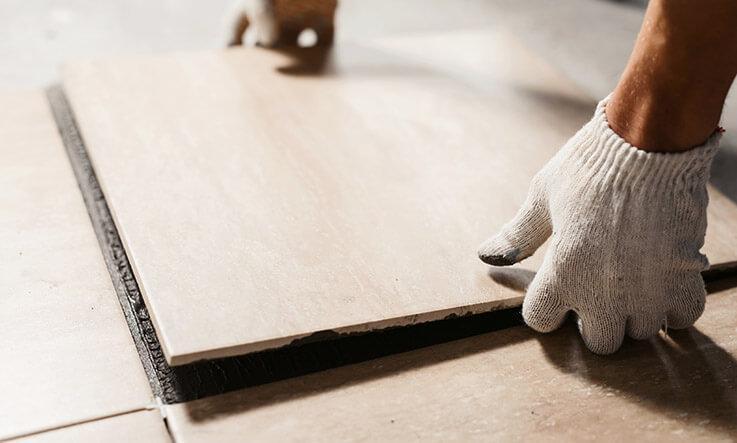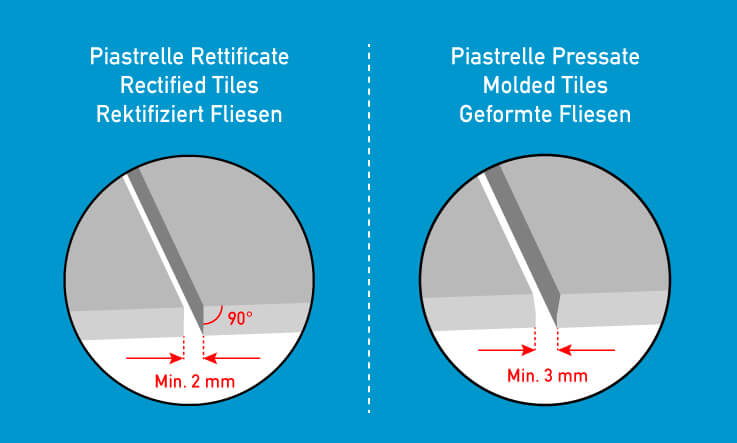
Rectified or molded tiles?
During the selection of the tiles, conflicting opinions are often heard about the decision between the two types: Rectified or Molded. But what does these two terms mean?
Rectified tiles
The rectification of the tile is a process that takes place in post-production where the edges are trimmed (rectified) going to form perfect 90 ° angles. This technique allows, when laying, to place the tiles very close. The grinding of the edges of the tiles is an important aspect to consider if you are looking for very thin joints. The result will be perfect if you are looking for a Modern, Industrial or minimal style.
In theory, rectified tiles could be installed without a joint, one against the other, but this type of installation is highly discouraged as a minimum gap of 2 mm is always necessary, as it acts as a shock absorber for the floor in the event of movements, settling of the house. If you do not leave any space between one tile and the other, in fact, the floor will be much more rigid and therefore prone to breakage during normal house resettlements. Furthermore, the grinding operation tends to make the edges much more delicate and the installation of the tiles next to each other would be much slower, in order to avoid the probable chipping of the edges.

Molded tiles
The molded (non-rectified) tile is the one that undergoes the greying process (firing process that determines the welding of the granules of the ceramic mixture) as it comes out of the mold, keeping edges usually beveled, therefore not exactly perpendicular, and must be laid with a minimum gap of 3 mm. This feature often means that the cost of the tile is lower, compared to a rectified product, since the material undergoes a less working process (the rectification).
The choice of the tile is also very tied to the style with which you want to furnish your spaces, a rustic, country, shabby-chic and vintage look suit a molded tile very well, since you can play with the thickness of the joint to obtain a very characteristic look, taking up the old traditional floors which inspired these styles.